A Compact MIMO Rectangular Dielectric Resonator Antenna for Millimeter-Wave Communication
Abstract
:1. Introduction
2. Antenna Configuration
2.1. Rectangular Dielectric Resonator Antennas
2.2. Slot Aperture RDRA Feeding Mechanism
2.3. Definitions of MIMO Envelope Correlation Coefficient (ECC) and Diversity Gain (DG) Performance Metrics
2.4. Antenna Structure
2.4.1. Single Element Antenna
2.4.2. MIMO Antenna Design
3. Experimental Methodology
4. Results and Discussion
4.1. Single Antenna Results
4.1.1. S-Parameters
4.1.2. Antenna Radiation Pattern
4.1.3. Antenna Gain
4.2. MIMO Antenna Results
4.2.1. S-Parameters
4.2.2. Antenna Radiation Pattern
4.2.3. Antenna Gain
4.2.4. Envelope Correlation Coefficient (ECC) and Diversity Gain (DG)
5. Conclusions
Author Contributions
Funding
Data Availability Statement
Acknowledgments
Conflicts of Interest
References
- Dahmen-Lhuissier, S. 5G. 2024. Available online: https://www.etsi.org/technologies/5g?tmpl=component (accessed on 15 January 2024).
- Malhat, H.; Zainud-Deen, S.; El-Hemaily, H.; Hamed, H.; AIbrahim, A. Reconfigurable circularly polarized hemispherical DRA using plasmonic graphene strips for MIMO communications. Plasmonics 2022, 17, 765–774. [Google Scholar] [CrossRef]
- Hussain, M.; Sharawi, M.; Podilchack, S.; Antar, Y. Closely packed millimeter-wave MIMO antenna arrays with dielectric resonator elements. In Proceedings of the 2016 10th European Conference on Antennas and Propagation (EuCAP), Davos, Switzerland, 10–15 April 2016; pp. 1–4. [Google Scholar]
- Dash, S.; Cheng, Q.; Khan, T.; Yadav, M.; Wang, L. 5G millimeter-wave MIMO DRAs with reduced mutual coupling. Microw. Opt. Technol. Lett. 2024, 66, e33982. [Google Scholar] [CrossRef]
- Sharma, A.; Rai, J.; Katiyar, H. Design of a High Gain MIMO Dielectric Resonator Antenna for 5G mm-Wave Applications. In Proceedings of the 2023 International Conference on IoT, Communication and Automation Technology (ICICAT), Gorakhpur, India, 23–24 June 2023; pp. 1–5. [Google Scholar]
- Zhang, Y.; Deng, J.; Li, M.; Sun, D.; Guo, L. A MIMO dielectric resonator antenna with improved isolation for 5G mm-wave applications. IEEE Antennas Wirel. Propag. Lett. 2019, 18, 747–751. [Google Scholar] [CrossRef]
- Pan, Y.; Qin, X.; Sun, Y.; Zheng, S. A Simple Decoupling Method for 5G Millimeter-Wave MIMO Dielectric Resonator Antennas. IEEE Trans. Antennas Propag. 2019, 67, 2224–2234. [Google Scholar] [CrossRef]
- Sharma, D.; Katiyar, R.; Dwivedi, A.; Nagesh, K.; Sharma, A.; Ranjan, P. Dielectric resonator-based two-port filtennas with pattern and space diversity for 5G IoT applications. Int. J. Microw. Wirel. Technol. 2023, 15, 263–270. [Google Scholar] [CrossRef]
- Murthy, N. Improved isolation metamaterial inspired mm-Wave MIMO dielectric resonator antenna for 5G application. Prog. Electromagn. Res. C 2020, 100, 247–261. [Google Scholar] [CrossRef]
- Muhammad, A.; Khan, M.; Malfajani, R.; Sharawi, M.; Alathbah, M. An Integrated DRA-Based Large Frequency Ratio Antenna System Consisting of a MM-Wave Array and a MIMO Antenna for 5G Applications. IEEE Open J. Antennas Propag. 2024, 5, 368–378. [Google Scholar] [CrossRef]
- Girjashankar, P.; Upadhyaya, T. Substrate integrated waveguide fed dual band quad-elements rectangular dielectric resonator MIMO antenna for millimeter wave 5G wireless communication systems. AEU-Int. J. Electron. Commun. 2021, 137, 153821. [Google Scholar] [CrossRef]
- Sharma, A.; Sarkar, A.; Biswas, A.; Akhtar, M. Millimeter-Wave Quad-Port Multiple-Input Multiple-Output Dielectric Resonator Antenna Excited Differentially by TE 20 Mode Substrate Integrated Waveguide. In Proceedings of the 2019 URSI Asia-Pacific Radio Science Conference (AP-RASC), New Delhi, India, 9–15 March 2019; pp. 1–4. [Google Scholar]
- Khan, M.; Khan, S.; Khan, O.; Aqeel, S.; Gohar, N.; Dalarsson, M. Mutual Coupling Reduction in MIMO DRA through Metamaterials. Sensors 2023, 23, 7720. [Google Scholar] [CrossRef]
- Karimian, R.; Kesavan, A.; Nedil, M.; Denidni, T. Low-mutual-coupling 60-GHz MIMO antenna system with frequency selective surface wall. IEEE Antennas Wirel. Propag. Lett. 2016, 16, 373–376. [Google Scholar] [CrossRef]
- Dadgarpour, A.; Zarghooni, B.; Virdee, B.; Denidni, T.; Kishk, A. Mutual coupling reduction in dielectric resonator antennas using metasurface shield for 60-GHz MIMO systems. IEEE Antennas Wirel. Propag. Lett. 2016, 16, 477–480. [Google Scholar] [CrossRef]
- Petosa, A. Dielectric Resonator Antenna Handbook; Artech: Norwood, MA, USA, 2024. [Google Scholar]
- McAllister, M.; Long, S.; Conway, G. Rectangular dielectric resonator antenna. Electron. Lett. 1983, 19, 218. [Google Scholar] [CrossRef]
- Abdulmajid, A.; Khalil, Y.; Khamas, S. Higher-Order-Mode Circularly Polarized Two-Layer Rectangular Dielectric Resonator Antenna. IEEE Antennas Wirel. Propag. Lett. 2018, 17, 1114–1117. [Google Scholar] [CrossRef]
- Mongia, R.K.; Ittipiboon, A. Theoretical and experimental investigations on rectangular dielectric resonator antennas. IEEE Trans. Antennas Propag. 1997, 45, 1348–1356. [Google Scholar] [CrossRef]
- Junker, G.; Kishk, A.; Glisson, A. Input impedance of dielectric resonator antennas excited by a coaxial probe. IEEE Trans. Antennas Propag. 1994, 42, 960–966. [Google Scholar] [CrossRef]
- Ibrahim, M.; Attia, H.; Cheng, Q.; Mahmoud, A. Wideband circularly polarized aperture coupled DRA array with sequential-phase feed at X-band. Alex. Eng. J. 2020, 59, 4901–4908. Available online: https://www.sciencedirect.com/science/article/pii/S1110016820304440 (accessed on 1 April 2024). [CrossRef]
- Mohapatra, S.; Badapanda, T.; Tripathy, S. An investigation of microwave dielectric properties of BaZr0.25Ti0.75O3 and performance of DRA for 5G application. J. Mater. Sci. Mater. Electron. 2024, 35, 167. [Google Scholar] [CrossRef]
- Suma, M.; Menon, S.; Bijumon, P.; Sebastian, M.; Mohanan, P. Rectangular dielectric resonator antenna on a conductor-backed co-planar waveguide. Microw. Opt. Technol. Lett. 2005, 45, 154–156. [Google Scholar] [CrossRef]
- Kumari, T.; Suman, K.; Gangwar, R.; Chaudhary, R. An anisotropic PRS for squinting the radiation pattern with gain improvement of MIMO system. AEU-Int. J. Electron. Commun. 2024, 176, 155150. Available online: https://www.sciencedirect.com/science/article/pii/S1434841124000359 (accessed on 1 April 2024). [CrossRef]
- Leung, K.; Luk, K.; Lai, K.; Lin, D. Theory and experiment of an aperture-coupled hemispherical dielectric resonator antenna. IEEE Trans. Antennas Propag. 1995, 43, 1192–1198. [Google Scholar] [CrossRef]
- Hong, W.; Desmond, C. MIMO-Based 5G FR1 Band Mobile Antenna. In Microwave and Millimeter-Wave Antenna Design for 5G Smartphone Applications, 1st ed.; John Wiley and Sons: Hoboken, NJ, USA, 2023; Chapter 5; pp. 125–165. [Google Scholar]
- Sharawi, M. Current misuses and future prospects for printed multiple-input, multiple-output antenna systems [wireless corner]. IEEE Antennas Propag. Mag. 2017, 59, 162–170. Available online: https://onlinelibrary.wiley.com/doi/abs/10.1002/9781394182459.ch5 (accessed on 19 April 2023). [CrossRef]
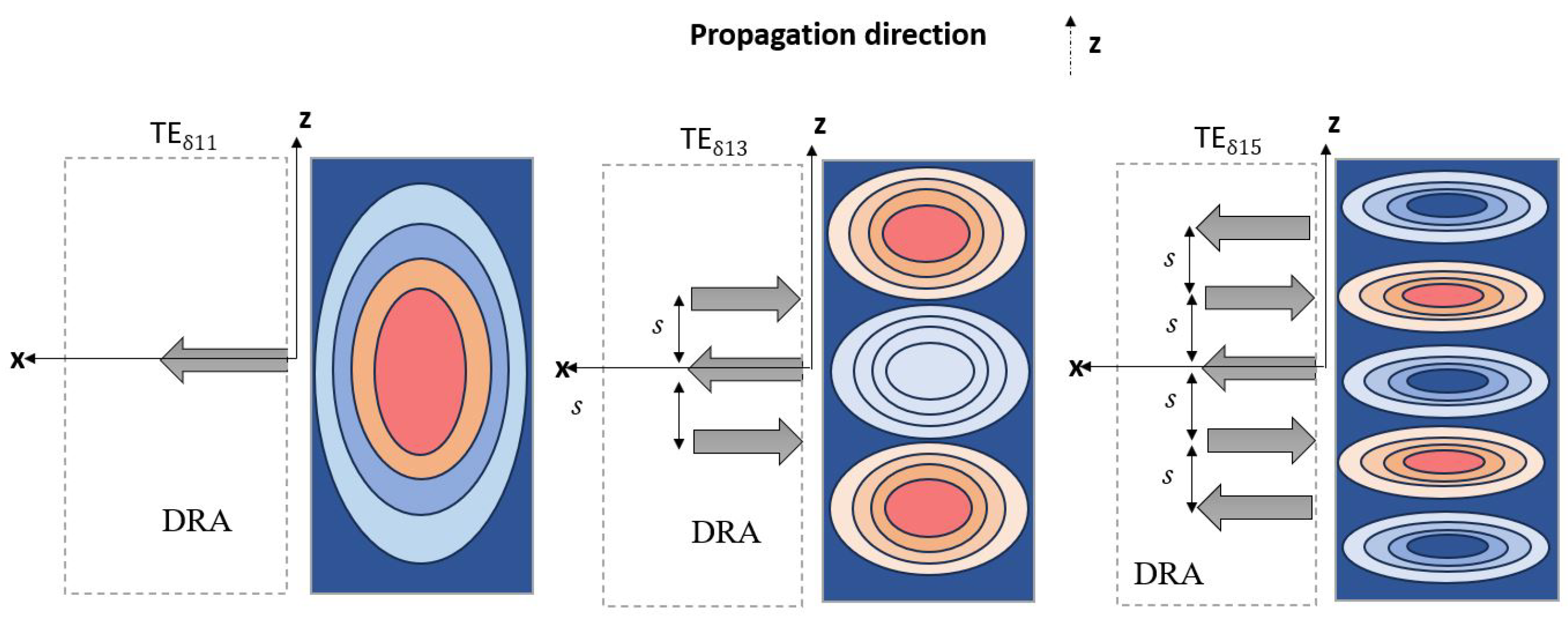
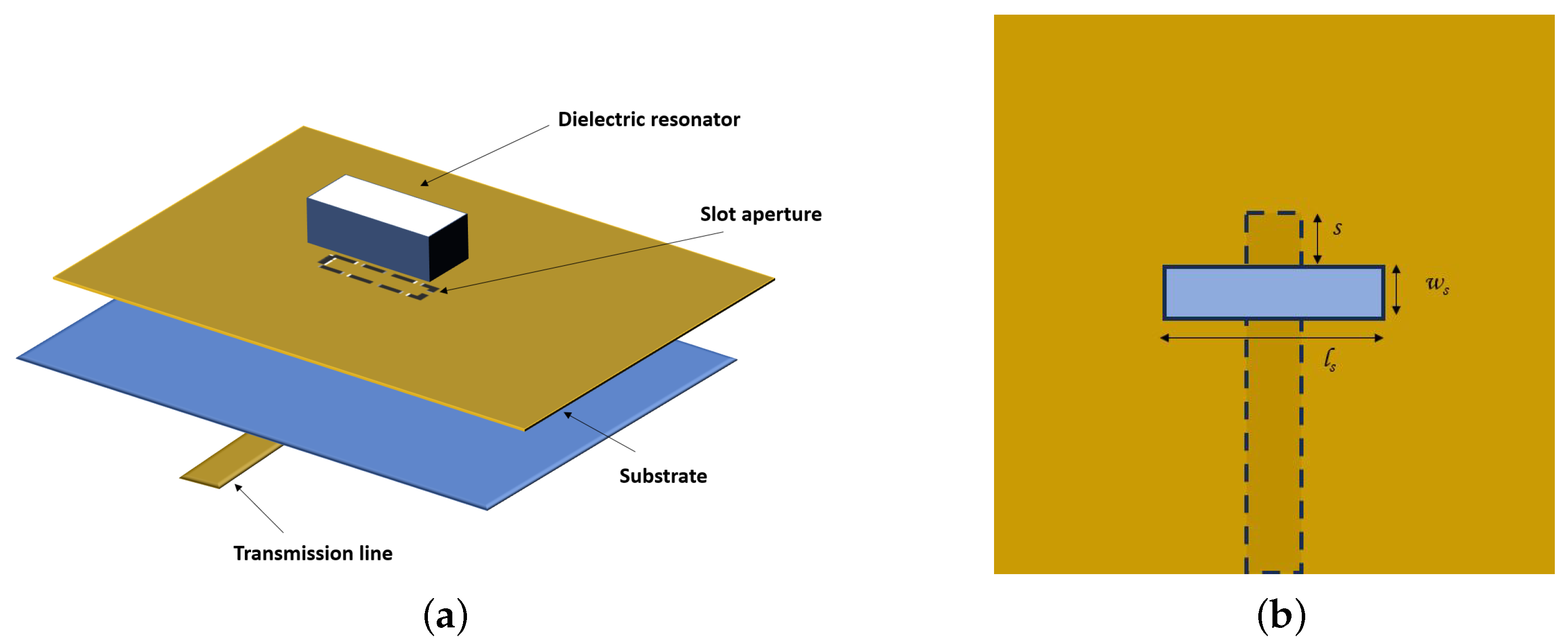
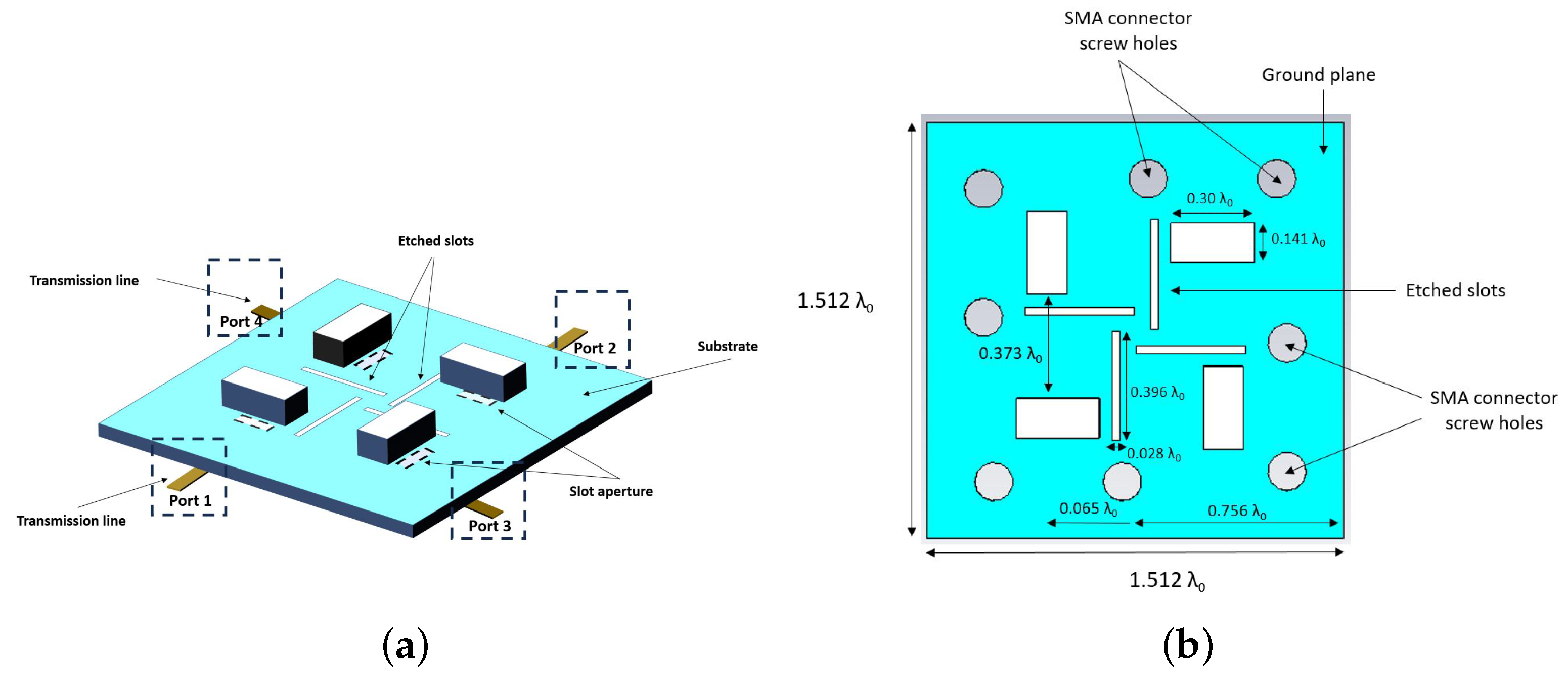



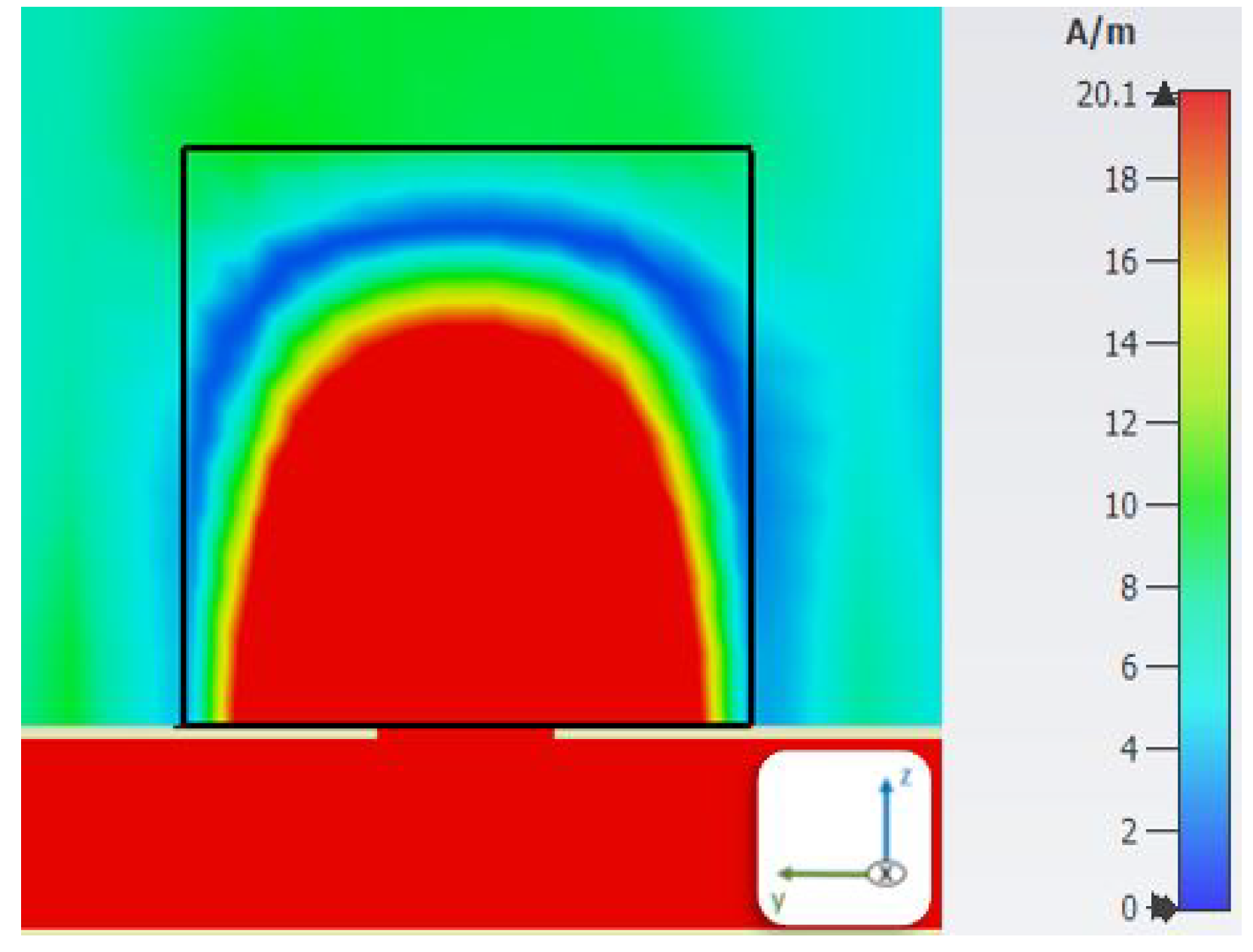
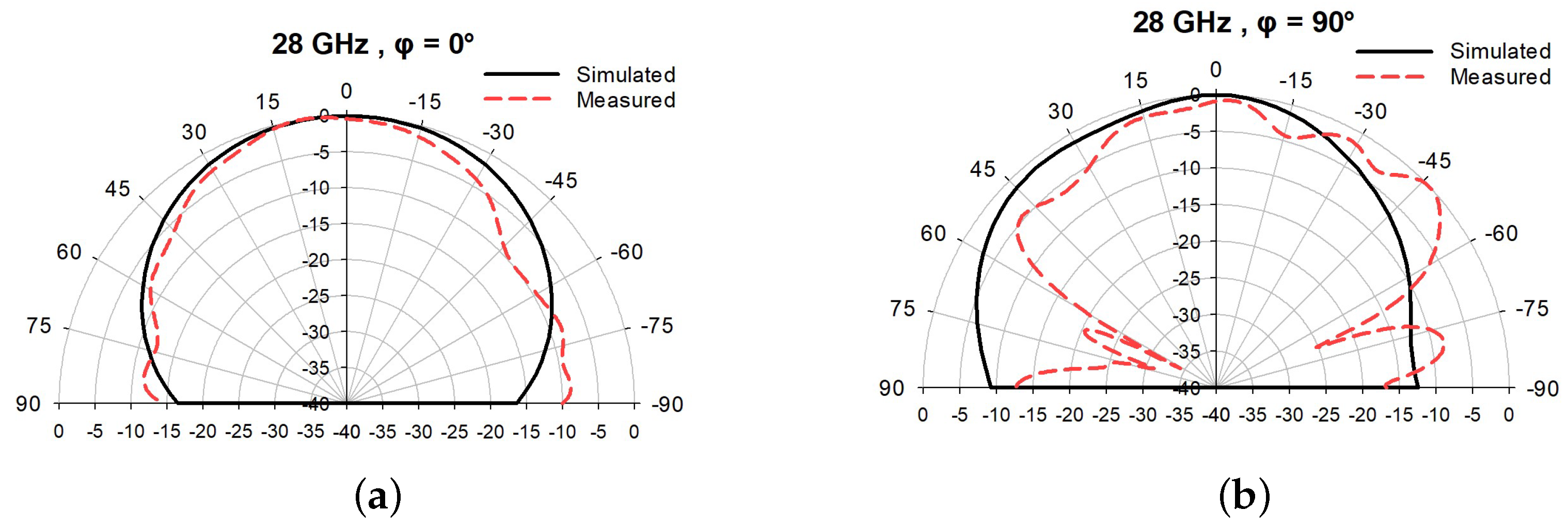
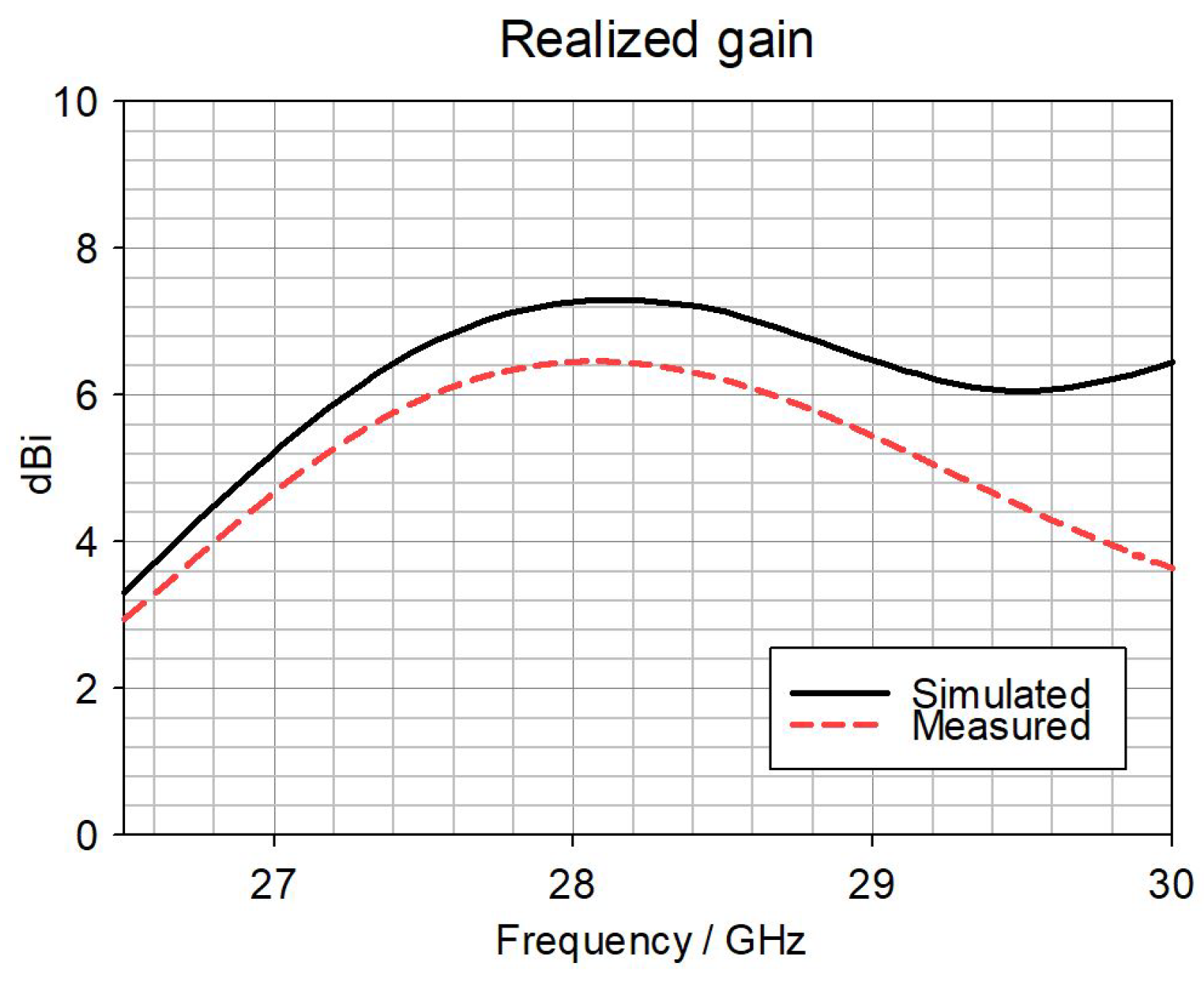
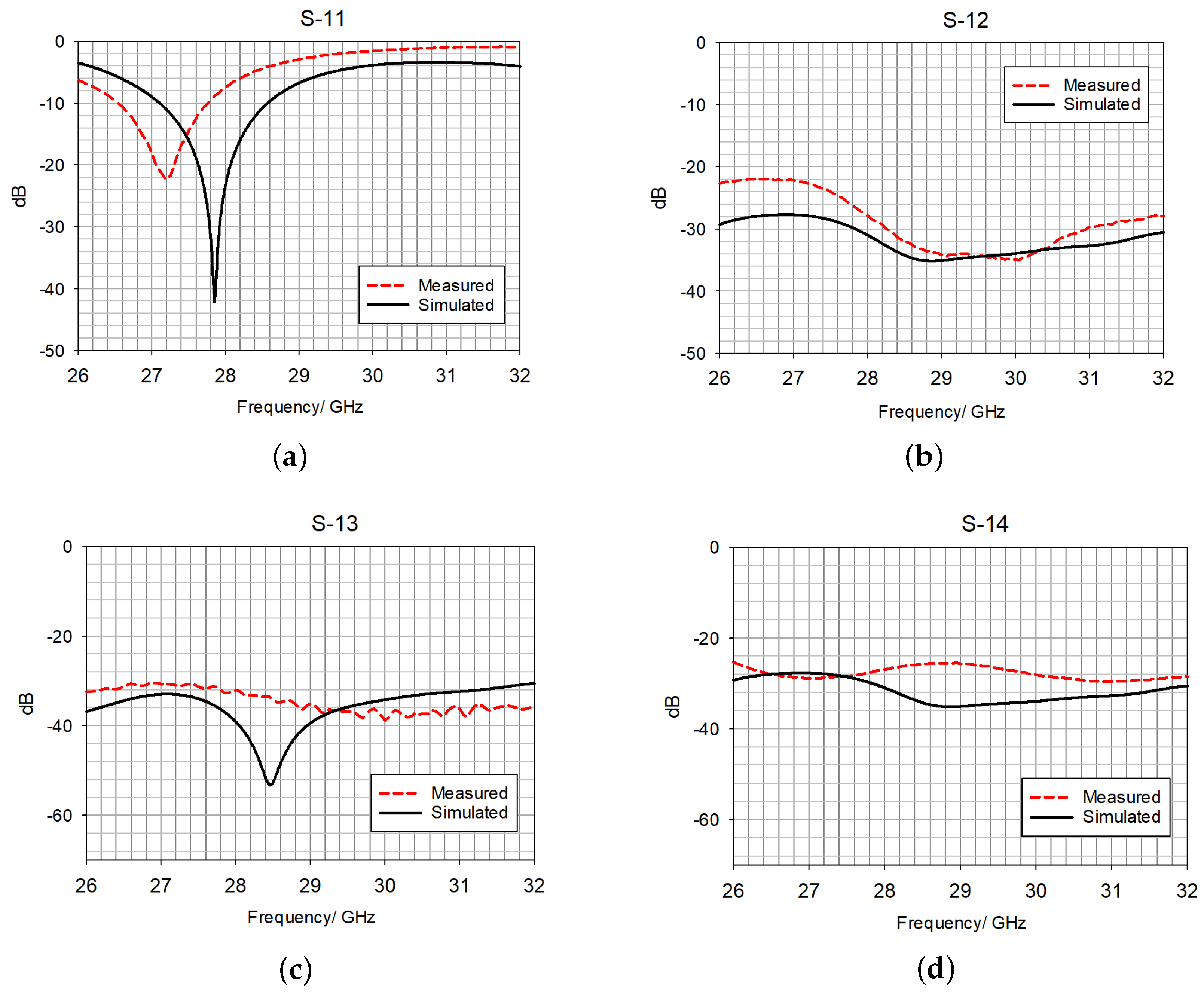

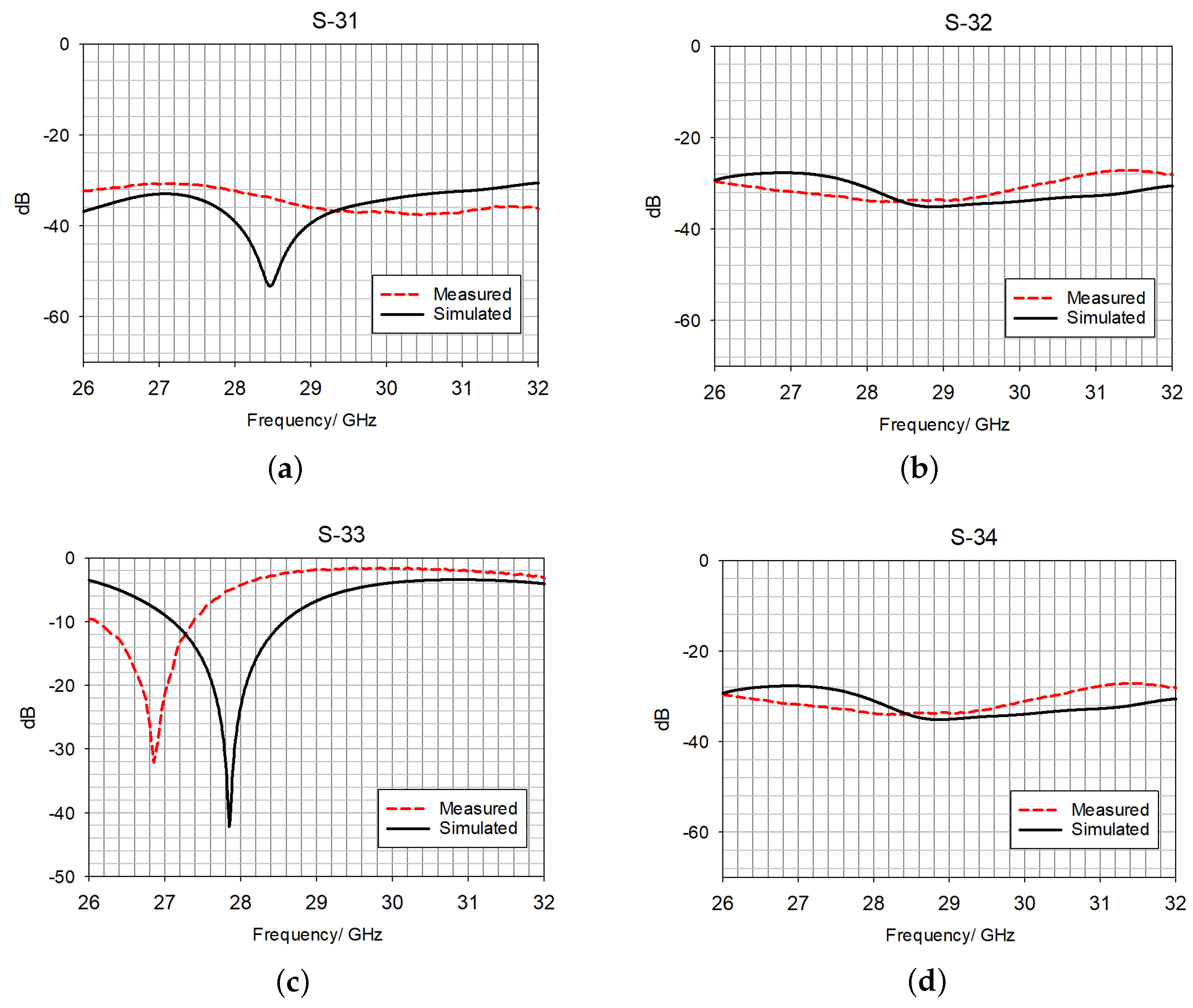





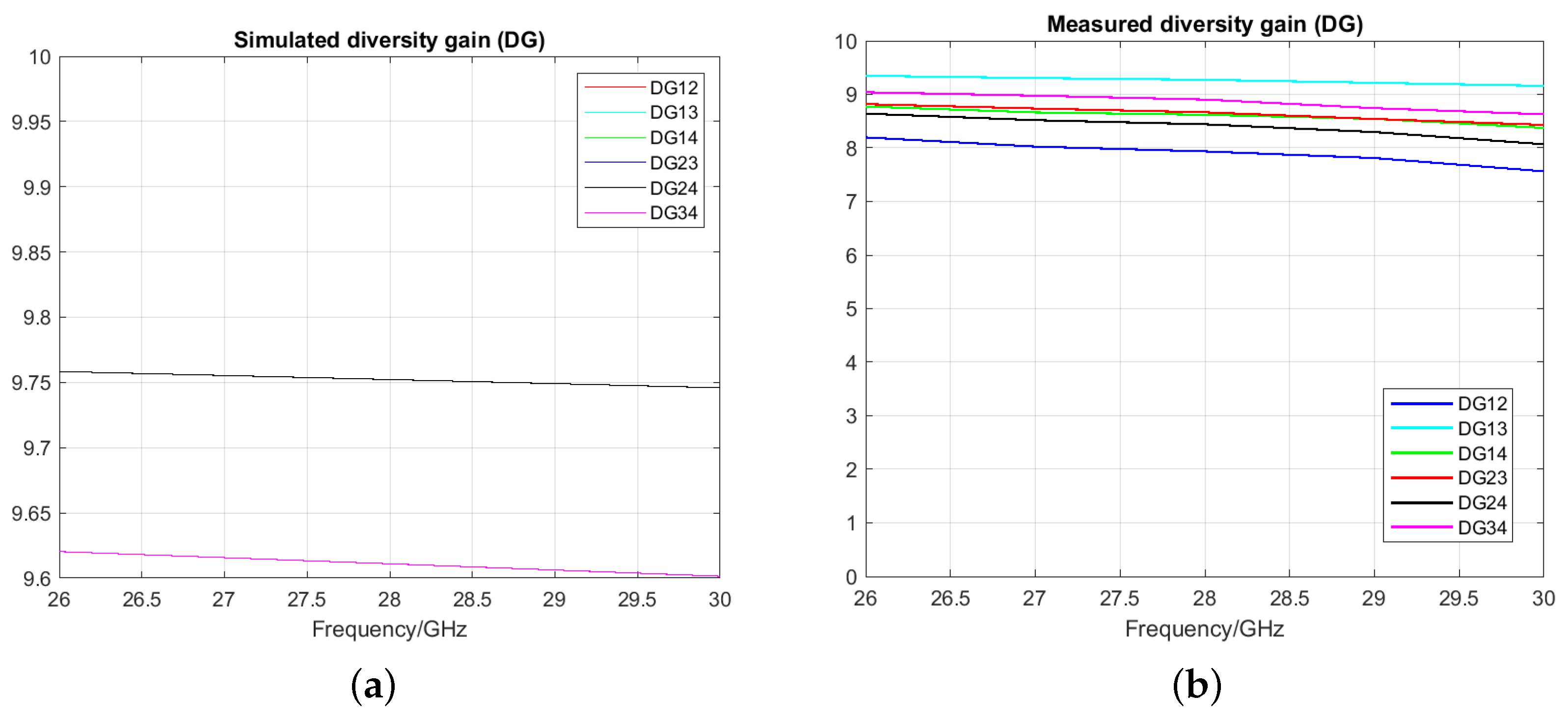
| Variable Name | Dimension (mm) |
|---|---|
| 0.48 | |
| 1.91 | |
| s | 1.73 |
| l | 3.22 |
| w | 1.55 |
| h | 1.52 |
Disclaimer/Publisher’s Note: The statements, opinions and data contained in all publications are solely those of the individual author(s) and contributor(s) and not of MDPI and/or the editor(s). MDPI and/or the editor(s) disclaim responsibility for any injury to people or property resulting from any ideas, methods, instructions or products referred to in the content. |
© 2024 by the authors. Licensee MDPI, Basel, Switzerland. This article is an open access article distributed under the terms and conditions of the Creative Commons Attribution (CC BY) license (https://creativecommons.org/licenses/by/4.0/).
Share and Cite
Merlos-Garza, E.; Khan, Z.U.; Khamas, S.K. A Compact MIMO Rectangular Dielectric Resonator Antenna for Millimeter-Wave Communication. Electronics 2024, 13, 3280. https://doi.org/10.3390/electronics13163280
Merlos-Garza E, Khan ZU, Khamas SK. A Compact MIMO Rectangular Dielectric Resonator Antenna for Millimeter-Wave Communication. Electronics. 2024; 13(16):3280. https://doi.org/10.3390/electronics13163280
Chicago/Turabian StyleMerlos-Garza, Erendira, Zia U. Khan, and Salam K. Khamas. 2024. "A Compact MIMO Rectangular Dielectric Resonator Antenna for Millimeter-Wave Communication" Electronics 13, no. 16: 3280. https://doi.org/10.3390/electronics13163280






